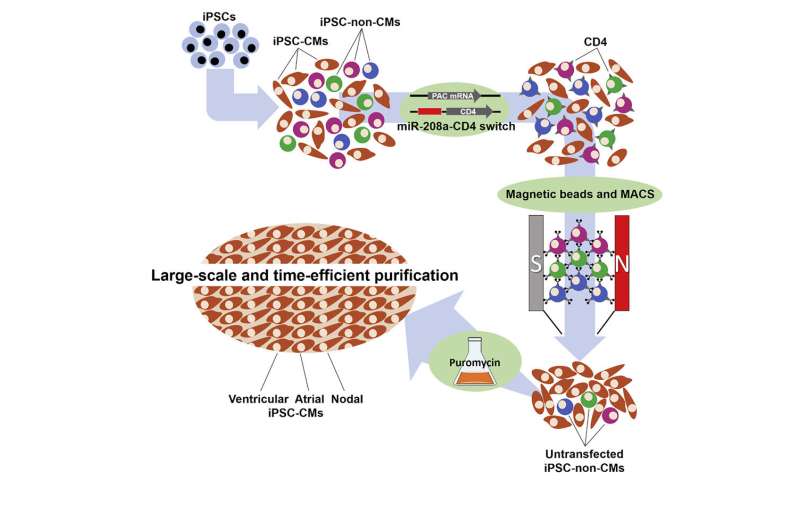New method for cell sorting utilizing microRNA switch and magnetic microbeads

The group led by Drs. Yoshinori Yoshida and Hirohide Saito succeeded in collecting and purifying large amounts of iPS cell-derived cardiomyocytes rapidly with the technology they newly developed by combining a cell sorting method using microRNA and magnetic microbeads—the miR-switch-MACS.
The research group previously developed a technology, the microRNA (miRNA) switch, which is designed to suppress the expression of proteins encoded by artificial messenger RNA (mRNA) in response to miRNA in cells. (CiRA News: May 22, 2015). This technology made it possible to detect and sort cardiomyocytes and other cells not by surface receptors but by miRNAs. It is also a highly safe technique because there is no risk of damaging the genome, and the miRNA switches introduced into the cell only exist for a short period of time.
In this study, by combining the miRNA switch with a cell sorting method using magnetic microbeads (Magnetic-activated cell sorting; MACS), the research group succeeded in collecting and purifying large amounts of iPS cell-derived cardiomyocytes in the order of hundreds of millions in a short time and with high purity (>97%). When the cardiomyocytes collected using the new technology, the miR-switch-MACS, were transplanted into laboratory mice with acute myocardial infarction, the researchers found that the cells were engrafted in mouse hearts effectively, and their cardiac functions were improved.
Furthermore, the group also succeeded in purifying and collecting insulin-producing cells using the miR-switch-MACS. This method can be applied to a variety of cell types and is expected to supply large amounts of highly purified target cells in a short period of time for cell transplantation therapy.
The results of this study were published online in Stem Cell Reports on June 10, 2022.
More information: Yuta Tsujisaka et al, Purification of human iPSC-derived cells at large scale using microRNA switch and magnetic-activated cell sorting, Stem Cell Reports (2022). DOI: 10.1016/j.stemcr.2022.05.003
Journal information: Stem Cell Reports
Provided by Kyoto University





















